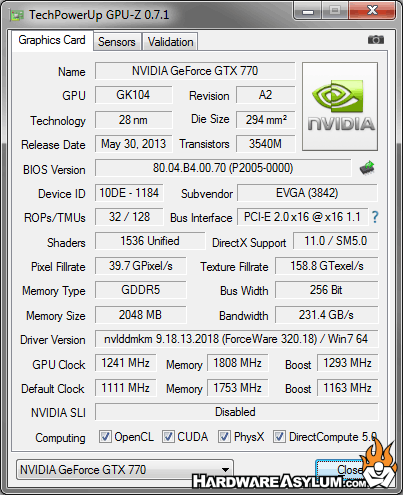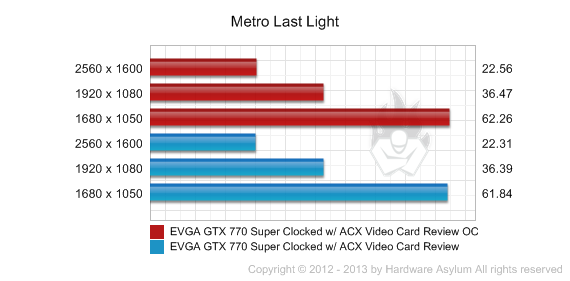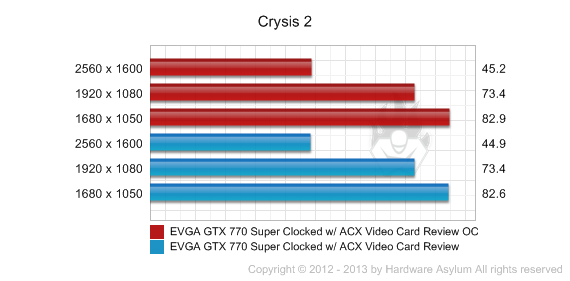EVGA GTX 770 Super Clocked w/ ACX Video Card Review
Author: Darren McCain
Published: Wednesday, June 19, 2013
Overclocking
Overclocking the Kepler is a little different than what we have done in the past since there are no shader controls and you have to deal with the non-adjustable Boost Clock. The EVGA GTX 770 SC already boasts a performance boost out of the box with an 1111 MHz Base Clock and a 1163 MHz Boost Clock. Generally these cards leave little room for additional overclocking but with the ACX system you can usually squeeze a bit more out if you are patient.
After some trial and error I found our GTX 770 sample tops out at a +130 boost on the core and +110 boost on the memory. That roughly translates into 1293Mhz Core and 1753Mhz. As before, when the system is under load the core clock was boosting up over 1300Mhz. Memory clock would boost up to nearly 1900Mhz.
After some trial and error I found our GTX 770 sample tops out at a +130 boost on the core and +110 boost on the memory. That roughly translates into 1293Mhz Core and 1753Mhz. As before, when the system is under load the core clock was boosting up over 1300Mhz. Memory clock would boost up to nearly 1900Mhz.

When dealing with Kepler you have to expect the unexpected which also making comparing results across sites almost impossible. What more, if your room temperature rises during your tests then scores won't match up and you'll have to start over.





As always, keep in mind that overclocking is not guaranteed so your results may vary. Out of habit we cranked the fans up to 100% for these tests and given how GPU Boost 2.0 will scale with system temp it is a good idea to keep things as cool as possible. There is a significant difference in our benchmarks when running the fans on auto or a lower setting.

The new GPU Boost 2.0 and Adaptive Temperature Controller paired with the ACX cooling setup improve on a reference design we called one of the quietest GPUs we have ever heard, or not heard. Fan controls still respond to GPU load but do so to prevent excess fan speed changes and thus maintain even noise levels. Unlike the reference design, the ACX system does vent directly into your system requiring a good airflow to reach peak performance. During testing this GTX 770 did run hotter with typical exhaust and surface temperatures in excess of 65c and this was with the fan set to 100% and the side of the case off.

